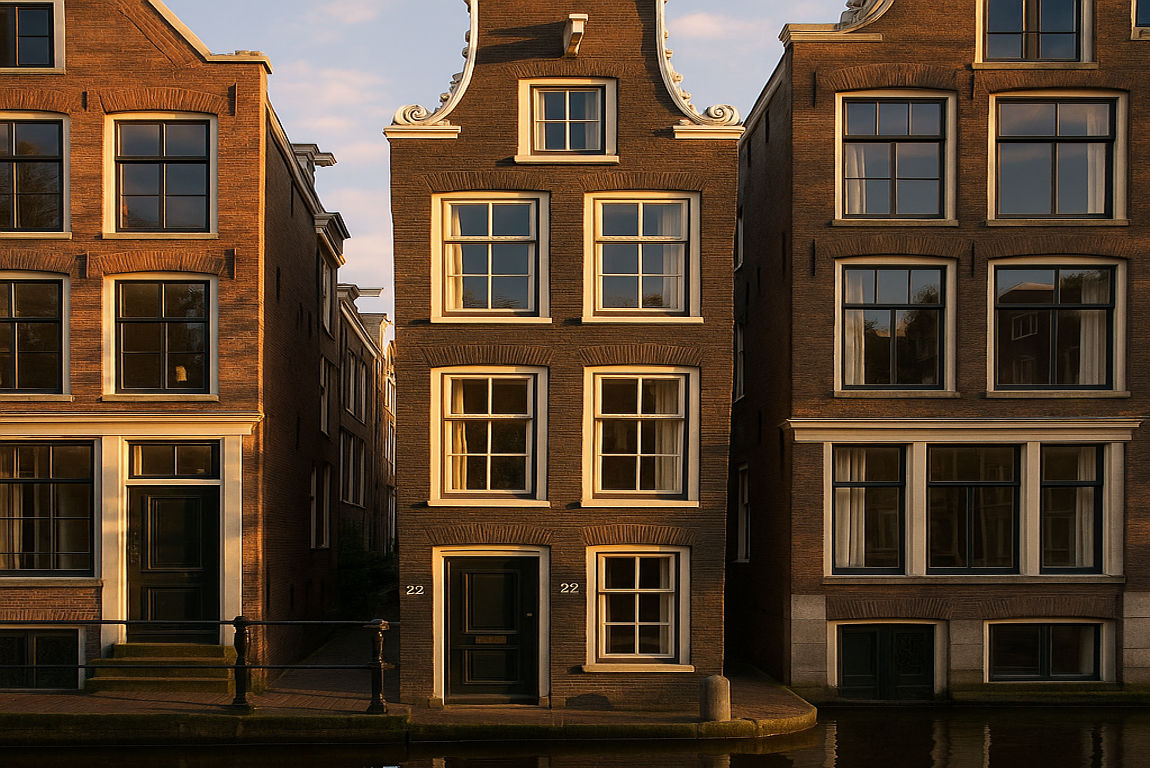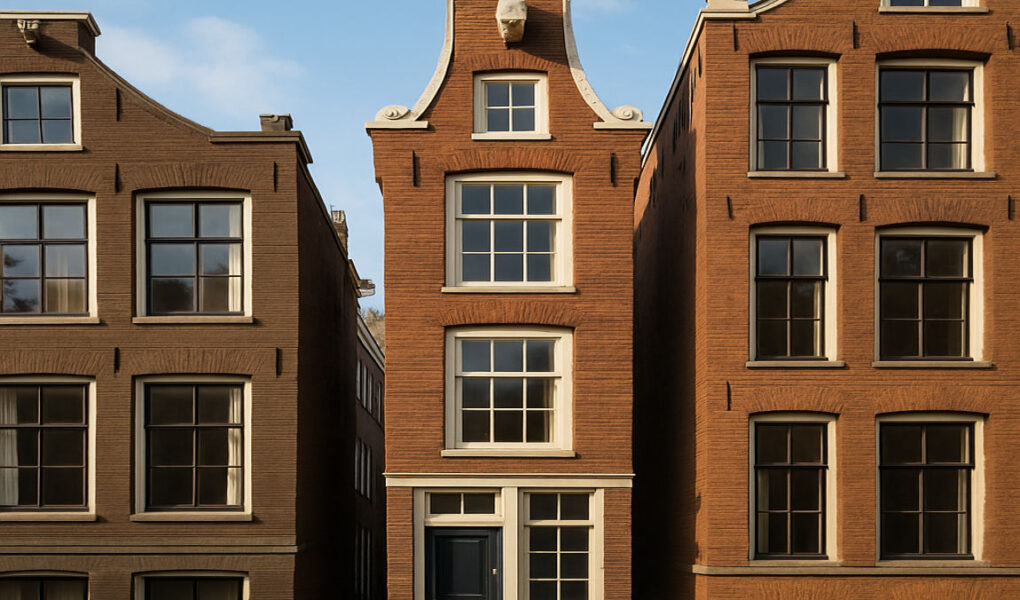Amsterdam is a city that consistently captivates its visitors. From its iconic canals to its historic architecture, every corner of the town tells a story. Among its many architectural wonders, one particular gem stands out for its sheer uniqueness: Amsterdam’s narrowest house. This tiny yet fascinating structure has become a must-see landmark for both tourists and architecture enthusiasts.
Historical Background of Amsterdam’s Narrowest House

Amsterdam’s narrowest house, located at Oude Hoogstraat 22, is a testament to the city’s creative use of space and its rich architectural history. Nestled in the heart of the historic city center, near Dam Square and the Red Light District, this house has a story that dates back centuries.
Origins of the Narrowest House
The house was built in 1738 on a tiny leftover plot of land. This plot became available after the demolition of a property known as “King David.” The narrow dimensions of the house were not a whimsical choice, but rather a practical solution to make the most of every inch of valuable urban land.
Interestingly, the house is located near the Sint-Paulusbroederklooster monastery and the Dutch East India Company’s East India House, both of which played significant roles in Amsterdam’s history. The proximity to these landmarks adds to the historical allure of the narrow house.
Urban Legends and Anecdotes
Over the years, the house has been the subject of many urban legends. One popular story suggests that the house was built as a joke for the doorman of the wealthy Trip family, who famously owned a much larger house nearby. While this tale adds a touch of humor to the house’s history, its true origins are rooted in practicality and the city’s unique house approach to urban planning.
Architectural Significance
The house features a typical Amsterdam bell-gable, a design element commonly seen in the city’s canal houses. Despite its small size, the home embodies the charm and elegance of Amsterdam’s architectural style. It’s a miniature version of the grand canal houses that line the city’s waterways, making it a delightful sight for visitors.
Architectural Features and Dimensions

The most striking feature of Amsterdam’s narrowest house is, of course, its size. Measuring just 2.02 meters wide and 5 meters deep, the house has a total surface area of approximately 9 square meters. To put that into perspective, it’s about the size of a small bedroom!
The Facade and Exterior
The house’s facade is a marvel of design. Despite its narrowness, it manages to fit seamlessly between the larger canal houses on either side. The bell-gable design adds a touch of elegance, making it a perfect example of Amsterdam’s architectural ingenuity.
Interior Layout
Initially, the house consisted of just one room on the ground floor. Over time, it was expanded to include two upper floors and an attic, maximizing the use of vertical space. The interior is cleverly designed to optimize the use of the limited space, featuring compact furniture and efficient layouts.
Clever Design Solutions
Living in such a narrow space comes with its challenges, but the house’s design incorporates several clever solutions. For example, the staircase is steep and narrow, allowing for space savings, and the furniture is custom-made to fit the compact dimensions. These design elements make the house not just a curiosity but also a functional living space.
Comparison with Other Narrow Houses
Amsterdam is home to several narrow houses, including Singel 7 and Singel 166. However, Oude Hoogstraat 22 is considered the narrowest independent house, as it has its entrance and is not part of a larger structure. This distinction sets it apart and adds to its charm.
Current Use and Visitor Experience

Today, Amsterdam’s narrowest house has found new life as a tea shop and tea room called “Het Kleinste Huis” (The Smallest House). This transformation has made it a popular destination for both tourists and locals.
The Tea Shop
The ground floor of the house operates as a tea shop, offering a wide variety of fresh loose teas, tea accessories, and pastries. The shop’s cozy atmosphere and unique setting make it a delightful place to browse and shop for tea lovers.
The Tea Room
Upstairs, the house features an intimate tea room with seating for up to five people. This cozy space provides a one-of-a-kind experience, allowing visitors to enjoy tea and pastries in the world’s narrowest house. The small size of the tea room adds to its charm, creating a warm and inviting atmosphere.
Visitor Impressions
Visitors often describe their experience as magical. The house’s narrowness and historical significance make it a must-see attraction, while the tea shop and tea room offer a relaxing and enjoyable way to spend time. Whether you’re a history buff, an architecture enthusiast, or simply looking for a unique experience, this house has something to offer.
Cultural and Heritage Significance

Amsterdam’s narrowest house is more than just a quirky landmark; it’s a registered national heritage site (rijksmonument). This designation highlights its significance as a part of Amsterdam’s cultural and architectural heritage.
Preserving Architectural Gems
The house is a prime example of the city’s commitment to preserving its unique architectural heritage. By maintaining structures like this, Amsterdam ensures that future generations can appreciate its rich history and creative urban planning.
A Reflection of Amsterdam’s History
The house also reflects the historical land value and urban development patterns in Amsterdam. Its narrow dimensions are a testament to the city’s innovative use of space, a characteristic that has defined Amsterdam’s architecture for centuries.
Impact on Tourism and Community
As a popular tourist attraction, the house contributes to Amsterdam’s vibrant tourism industry. It also supports local businesses, such as the tea shop, and fosters a sense of community by bringing people together to appreciate its charm.
Tips for Visiting Amsterdam’s Narrowest House

Planning a visit to Amsterdam’s narrowest modern house? Here are some tips to make the most of your experience:
- Best Times to Visit: To avoid crowds, consider visiting on weekdays or early in the morning.
- Location Details: The house is located at Oude Hoogstraat 22, near Dam Square and the Red Light District.
- Nearby Attractions: Consider combining your visit with nearby attractions such as the Amsterdam Museum or the Anne Frank House.
- Tea Room Recommendations: Don’t miss the chance to enjoy a cup of tea in the cozy upstairs tea room.
- Photography Tips: Capture the narrow facade from a distance to highlight its unique proportions.
Fun Facts and Myths About Amsterdam’s Narrowest House

- Common Misconceptions: Many canal cruise guides mistakenly point to Singel 7 as the narrowest house, but Oude Hoog strat 22 holds the title.
- Urban Legends: The story about the house being built as a joke for a doorman adds a humorous twist to its history.
- Quirky Details: The house’s design includes tiny windows and steep staircases, adding to its charm.
Amsterdam’s Narrowest House: Frequently Asked Questions
Where is the narrowest house located?
Amsterdam’s narrowest house is situated at Singel 7, right on the Singel canal, one of the city’s oldest and most iconic waterways. The house is nestled between two larger buildings, making it easy to miss if you’re not actively searching for it.
How narrow is the house?
The narrowest house in Amsterdam measures a mere 1 meter (3.3 feet) wide at its narrowest point, earning it the title of the world’s narrowest house. The building gradually widens as it ascends, reaching a width of about 2 meters (6.6 feet) at the top.
When was the narrowest house built?
The exact construction date of Amsterdam’s narrowest house remains uncertain, but it is believed to have been built in the 17th century, during the Dutch Golden Age. This period saw a surge in Amsterdam’s population and economic prosperity, leading to the construction of numerous buildings, including this unique structure.
Who built the narrowest house?
The identity of the architect or builder responsible for the narrowest house is unknown. However, it is speculated that the house was constructed by a skilled craftsman who sought to maximize the use of the limited space available on the narrow plot of land.
Can people actually live in the narrowest house?
Yes, the narrowest house in Amsterdam is a fully functional residential property. Despite its limited width, the house has been ingeniously designed to accommodate the necessities of daily life. The interior features a compact kitchen, bathroom, and living area, all carefully arranged to make the most of the available space.
How do people navigate the narrow spaces?
Living in the narrowest house requires a certain level of adaptability and resourcefulness. Residents must be mindful of their movements and belongings, as the narrow corridors and rooms leave little room for error. Furniture and appliances are often custom-made to fit the unique dimensions of the house, and clever storage solutions are employed to maximize every inch of space.
Can I visit the narrowest house?
Unfortunately, the narrowest house in Amsterdam is a private residence and not open to the public. However, you can still admire its unique facade from the outside while strolling along the Singel canal. Be sure to keep an eye out for the distinctive address, Singel 7, and snap a photo to capture this architectural marvel.




